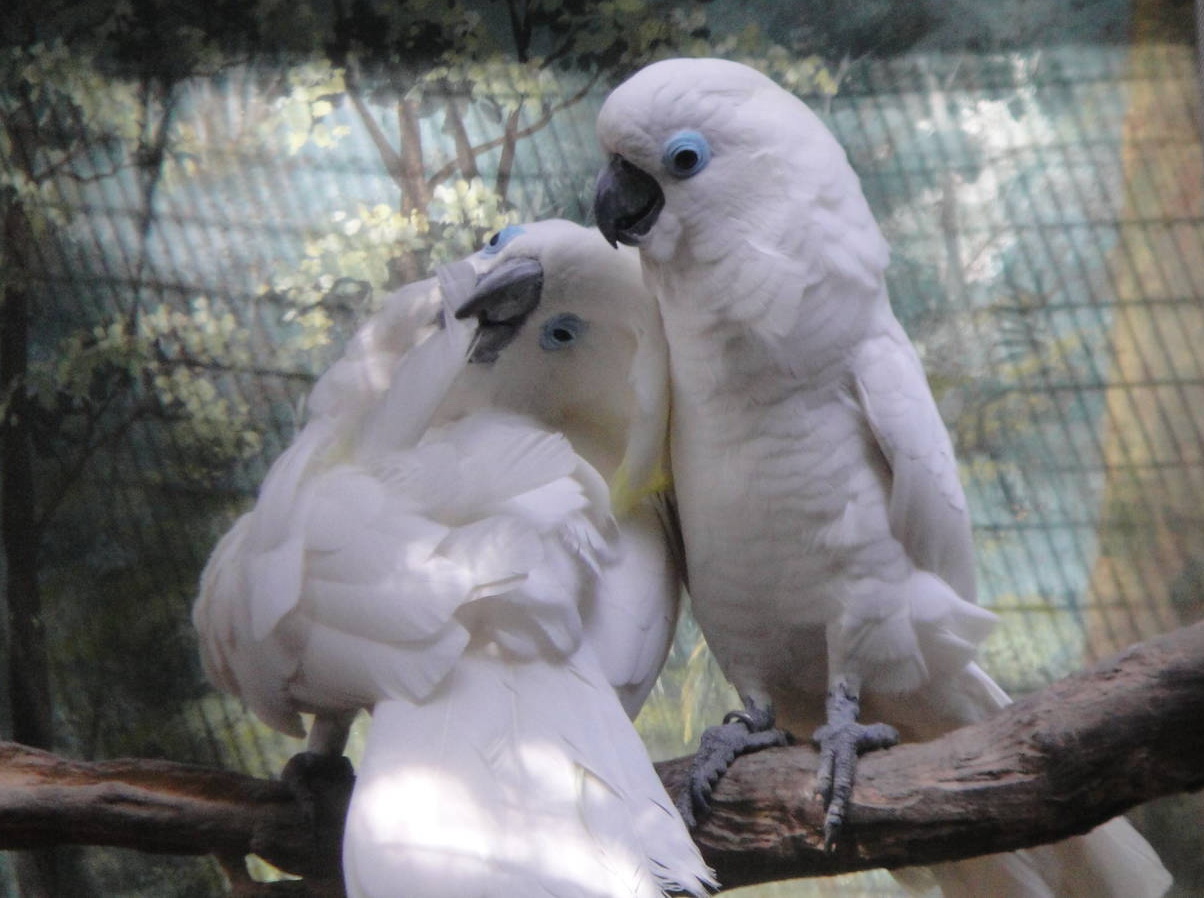
Blue-eyedcockatoo, orWhite cockatoo(Cacatua ophthalmica, orPlyctolophus ophthalmicus)
Phylum —chordata
Class — aves
Order — psittaciformes
Family — cacatuidae
Genus – cacatua
Appearance
The Blue-eyed cockatoos get their name from the blue circles of featherless skin around their eyes.
At maturity they will average between 45 and 50 centimeters (18-20 inches) in length and weigh between 500 and 570 grams (18-20 oz).
Their plumage is largely white, though a striking large yellow and white crest is seen atop their heads. The yellow feathers are behind the white and are often not seen until the crest is raised. Yellow can also be seen under the wings and tail feathers. The beak of the Blue-eyed cockatoo is black.
Males and females look alike; but sometimes can be distinguished by eye color. Males traditionally have a black eyes, while the female's tends to be reddish-brown; but this small difference is not a reliable gender indicator.
Habitat
The Blue-eyed cockatoo is native to the forests of New Britain and New Ireland in the Bismarck Archipelago (Papua New Guinea in the western Pacific Ocean).
Behavior
All cockatoos are a little mischievous and energetic. The Blue-eyed cockatoo, on the other hand, is much calmer and affectionate than its relatives. These birds love doing their tricks, playing with their toys and they’re always looking for attention and cuddling. Blue-eyed cockatoos love to be handled and will perch on your shoulder. In no time, this graceful bird will bond with you.
Diet
The Blue-eyed cockatoo's diet mainly consists of various seeds and nuts, berries, and fruits. They are also known to feed on insects and their larvae.
Reproduction
Blue-eyed cockatoos mate for life and form very tight family bonds.In the wild, they will typically breed in tree cavities. Captive Blue-eyed cockatoos will accept appropriately sized nest boxes.
The average clutch consists of 2 eggs. The male and female take it in turns to incubate them.The incubation period is about 28-30 days. Both the male and female Blue-eyed cockatoos will care for the chicks and feed them until they wean at about 14 to 16 weeks.
In captivity
The average Blue-eyed cockatoo lives 40 years in captivity. Surprisingly their lifespan in the wild is longer, 50 to 60 years. The decreased lifespan in captivity may be due to improper care.
When considering a pet cockatoo, you need to keep in mind that they can be noisy. They simply love to mimic human speech in their own, goofy way. This can sometimes go on for a long time and very loudly, too, so a good dose of patience is needed. Offering more attention and social interaction to your pet is bound to minimize their need for vocal outbursts. The loudness can often be a result of boredom and neglect, so make sure to give a portion of your time to your pet.
Blue-eyed cockatoo adapts easily to most conditions and is known as a hardy and robust bird. The main factors you need to pay attention to are providing enough sunlight, moving space, good hygiene and social interaction. If neglected, this parrot may develop apathy, loss of appetite, and complete loss of feathers due to stress.
 Russian
Russian
 English
English























